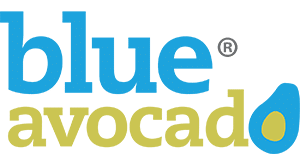The Unrecognized Value of Community Nonprofits, Hiring Grantwriters, Extended Warranties, MTV
There is a difference between community nonprofits on one hand, and universities and hospitals on the other, and it isn’t just size.

Nonprofits should claim all the impacts they have, not only explicit outcomes.
Community nonprofits arise to meet self-identified community needs, and are the vehicles through which we take care of our communities and act for social change.
Much more than individual corporations providing units of services, we are vital components of movements ranging from health care access to environmental health, immigration rights, ending racial discrimination and raising our individual and collective spirits.
But community nonprofits take heat from everyone: government tells us we’re too small or mismanaged; consultants urge us to make a hundred management improvements; donors tell us there are too many nonprofits; corporations tell us to be more businesslike (like Bear Stearns or Enron?) and foundations tell us that our logic models aren’t good enough.
It’s easy to become discouraged when faced with this onslaught of negativity. But community nonprofits and people – the overwhelming majority of the nonprofit sector – are the ones doing most of the work, coming up with the most innovative ideas and making the most meaningful investments in community life.
I recently met with a some women from a public housing project who were trying to raise a few thousand dollars to start a drill team for middle school girls – the money was for instruments and uniforms. After talking with them, I realized that some people might assume that the YMCA or the Boys and Girls Club would do a better job of starting such a drill team – after all, they have experts in youth development and professional purchasing departments!
While these are great organizations, I hope you would all agree with me that there is a unique and greater value in having mothers in a housing project start and lead such a team. They will not only provide “units of service,” but in the process will create and nurture a community of parents and youngsters, a community that will realize many more impacts than just “unduplicated clients served.”
In addition to our greater impact, community nonprofits are actually more effective and more efficient than nearly all government agencies and corporations. We break new ground (unlike foundations) and take personal risks (unlike funders).
As community nonprofits, we not only provide services, we are parts of and we lead movements for social change, and we hold ourselves accountable to our constituencies.
All of our organizations are like the drill team for girls: we not only develop and provide important services, but in doing so we create community and bring about long-term, varied and unexpected benefits.
In our own work, we all share the heart, spirit and meaning of the drill team mothers. Let’s claim not only our explicit outcomes, but all the impacts we have.
You might also like:
- The Ultimate Guide to Nonprofit Fundraising in 2025
- The Best Route to Approaching Donors: Hand-Head-Heart
- Your Nonprofit Got its Grant. Now What?
- Nonprofit Fundraising: Are You Choosing the Right Grants?
- 9 Principles to Make Your Nonprofit Fundraising Effective — and Fun!
You made it to the end! Please share this article!
Let’s help other nonprofit leaders succeed! Consider sharing this article with your friends and colleagues via email or social media.
About the Author
Jan is a former editor of Blue Avocado, former executive director of CompassPoint Nonprofit Services, and has sat in on dozens of budget discussions as a board member of several nonprofits. With Jeanne Bell and Steve Zimmerman, she co-authored Nonprofit Sustainability: Making Strategic Decisions for Financial Viability, which looks at nonprofit business models.
Articles on Blue Avocado do not provide legal representation or legal advice and should not be used as a substitute for advice or legal counsel. Blue Avocado provides space for the nonprofit sector to express new ideas. The opinions and views expressed in this article are solely those of the authors. They do not purport to reflect or imply the opinions or views of Blue Avocado, its publisher, or affiliated organizations. Blue Avocado, its publisher, and affiliated organizations are not liable for website visitors’ use of the content on Blue Avocado nor for visitors’ decisions about using the Blue Avocado website.








Excellent article! People need to realize the contributions of community based nonprofits. Too often we forget that a major part of the eradication of social ills is a commitment by the community to addressing the issues–not in being rescued or controlled by outside organizations.
The community based drill team for middle school girls is a perfect example for this article. One of the threats to the community based non profit is the professionalization of non profits across the board. While the community based project will have different challenges than a larger entity running the drill team, it won’t face credibility issues with the parents of the girls and will know how to access community resources. I often worry about the emphasis of effectiveness and efficiency now taking over the non profit sector and the effect it will have on great community projects. I think there are solutions for the big agencies and the smaller to work together– but there will be more of a learning curve on the big agencies’ parts to be responsive and respect the community based organization.
There are also big differences between small all-volunteer community activities, such as your middle school project, on one hand, and community nonprofits with payrolls on the other. Resource providers in communities can facilitate these very efficient (no personnel expenses) and effective (as noted in Patti Binder’s comment) and gain significant leverage with their funds by simply establishing a funding program that would reimburse unpaid leaders of all-volunteer community activities for their out-of-pocket expenses. These funding sources could require a budget, require bona fide expenses reports for reimbursements, and limit reimbursements to the budget. These funding sources could be creative and experiment with a matching funds concept where, say, 80% or 90% of the budget would be reimbursed with 10% or 20% of the budget covered by the volunteers themselves. There are enormous untapped human resources — e.g., parents, students, teachers, retirees/elders (especially) — available for conducting community services of all kinds that may be ready, eager and able to pitch in if they can just be reimbursed for their out-of-pocket expenses. Maybe a few creative resource providers will test this concept with a pro-active demonstration project in their community. Maybe some are already doing this?
Great reflection on the nuances of types of nonprofits and how they function in communities. The NPO world is vast and complex, and needs to be understood as such by funders, the corporate world, and communities. As a member of the philanthropy team at the YMCA of the East Bay, I wanted to briefly comment on our local autonomy and community-based programming. Although well-branded both nationally and internationally, our local YMCA branches definitely reflect their communities and often have very grassroots programs. Most of the work we do we couldn’t do without volunteers, as they inspire, implement and often drive programs. A drill team project created by mothers would work nicely under the YMCA banner, especially our Urban Services branches. Perhaps we fit under another NPO definition that is the best of both worlds. Lucky me – that makes my job easier. Thanks for your eloquent thoughts and for the PR moment.
What about just the basic concept of specialization? Most big entities are terrible at doing grassroots things. Most grassroots entities can’t achieve the economies of scale that bigger entities can.
So how about the concept of an “empowerment provider”. The youth services agency with a broad mission, that, every time a groups of parents shows up with an idea, provides an infrastructure for helping them be successful.
Hard to see either the funding community or the larger agency community embracing the concept without trying to insist on a logic model (how many drill teams really need a logic model?), but it would create world where ideas and programs are entrepreneurial and community driven, while financial management and operations can be efficient and “business like”.